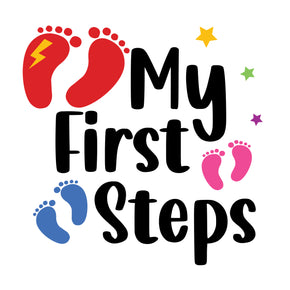Choosing Shoes For Your Child Who Is Hypermobile
-
Stability and Support: Look for shoes with sturdy construction and good arch support to help stabilise your child's feet. Shoes with a firm heel counter and supportive midsole provide stability and prevent excessive rolling or twisting of the ankles, reducing the risk of strains or sprains.
-
Cushioning: Opt for shoes with ample cushioning in the midsole and heel area to absorb shock and reduce impact during walking or running. Cushioned shoes help alleviate pressure on your child's joints and provide a comfortable walking experience, especially on hard surfaces.
-
Secure Fit: Choose shoes that offer a secure and snug fit to prevent your child's feet from sliding around inside the shoe. Look for features such as adjustable straps, laces, or hook-and-loop closures that allow you to customize the fit according to your child's foot shape and size.
-
Roomy Toe Box: Select shoes with a spacious toe box that allows your child's toes to wiggle freely without feeling cramped or restricted. A roomy toe box accommodates any toe abnormalities or deformities caused by hypermobility and reduces the risk of pressure points or discomfort.
-
Flexibility: Look for shoes with a flexible sole that allows natural foot movement and promotes proper gait mechanics. Flexible shoes enable your child's feet to bend and flex with each step, enhancing their overall comfort and mobility.
-
Breathable Materials: Choose shoes made from breathable materials that allow air to circulate freely and keep your child's feet cool and dry. Breathable shoes help prevent sweat buildup and reduce the risk of bacterial or fungal infections, promoting foot health and hygiene.
-
Lightweight Design: Opt for lightweight shoes that are easy for your child to lift and manoeuvre, especially if they experience muscle weakness or fatigue due to hypermobility. Lightweight shoes reduce the strain on your child's muscles and joints, allowing them to move more comfortably and efficiently.
-
Durable Construction: Select shoes with durable construction and high-quality materials that can withstand the rigours of daily wear and tear. Reinforced stitching, sturdy outsoles, and durable overlays ensure long-lasting performance and reliable support for your hypermobile child's feet.
-
Ankle Support: Consider shoes with extra padding or higher ankle collars to provide additional support and stability for your child's ankles. Ankle support helps prevent excessive pronation or supination and reduces the risk of ankle injuries during physical activities.
-
Consultation with Healthcare Professionals: Finally, consider consulting with healthcare professionals, such as pediatric orthopedists or physical therapists, for personalised recommendations based on your child's specific needs and degree of hypermobility. They can provide valuable insights and guidance on choosing the most appropriate footwear for your child's condition.

